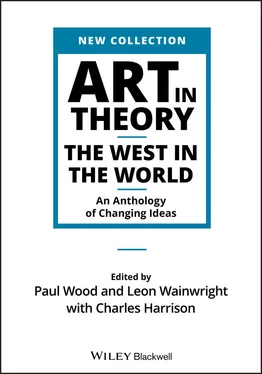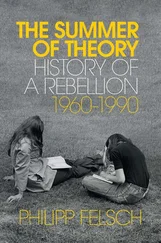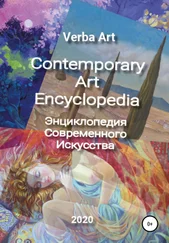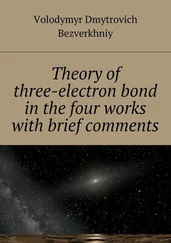XIV The reception of the chinese from a lady of distinction.
I was some days ago agreeably surprised by a message from a lady of distinction, who sent me word, that she most passionately desired the pleasure of my acquaintance; and, with the utmost impatience, expected an interview. I will not deny, my dear Fum Hoam, but that vanity was raised at such an invitation … My imagination painted her in all the bloom of youth and beauty. I fancied her attended by the loves and graces; and I set out with the most pleasing expectations of seeing the conquest I had made.
When I was introduced into her apartment, my expectations were quickly at an end; I perceived a little shrivelled figure indolently reclined on a sofa, who nodded by way of approbation at my approach. This, as I was afterwards informed, was the lady herself, a woman equally distinguished for rank, politeness, taste, and understanding. As I was dressed after the fashion of Europe, she had taken me for an Englishman, and consequently saluted me in her ordinary manner; but when the footman informed her grace that I was the gentleman from China, she instantly lifted herself from the couch, while her eyes sparkled with unusual vivacity. ‘Bless me! can this be the gentleman that was born so far from home? What an unusual share of somethingness in his whole appearance! Lord, how I am charmed with the outlandish cut of his face! how bewitching the exotic breadth of his forehead! I would give the world to see him in his own country dress. […] Pray speak a little Chinese: I have learned some of the language myself. Lord! have you nothing pretty from China about you; something that one does not know what to do with? I have got twenty things from China that are of no use in the world. Look at those jars, they are of the right pea‐green; these are the furniture.’ ‘Dear madam,’ said I, ‘these, though they may appear fine in your eyes, are but paltry to a Chinese; but, as they are useful utensils, it is proper they should have a place in every apartment.’ – ‘Useful! Sir, replied the lady; sure you mistake, they are of no use in the world.’ – ‘What! are they not filled with an infusion of tea as in China?’ replied I. – ‘Quite empty and useless, upon my honour, Sir.’ ‘Then they are the most cumbrous and clumsy furniture in the world, as nothing is truly elegant but what unites use with beauty.’ ‘I protest,’ says the lady, ‘I shall begin to suspect thee of being an actual barbarian. I suppose you hold my two beautiful pagods in contempt.’ ‘What!’ cried I, ‘has Fohi spread his gross superstitions here also? Pagods of all kinds are my aversion.’ ‘A Chinese, a traveller, and want taste! it surprises me. Pray, Sir, examine the beauties of that Chinese temple which you see at the end of the garden. Is there any thing in China more beautiful?’ ‘Where I stand, I see nothing, madam, at the end of the garden, that may not as well be called an Egyptian pyramid as a Chinese temple; for that little building in view is as like the one as t’other.’ ‘What! Sir, is not that a Chinese temple? you must surely be mistaken. Mr Freeze, who designed it, calls it one, and nobody disputes his pretensions to taste.’ I now found it vain to contradict the lady in any thing she thought fit to advance; so was resolved rather to act the disciple than the instructor. She took me through several rooms all furnished, as she told me, in the Chinese manner; sprawling dragons, squatting pagods, and clumsy mandarines, were stuck upon every shelf: in turning round, one must have used caution not to demolish a part of the precarious furniture.
In a house like this, thought I, one must live continually upon the watch; the inhabitant must resemble a knight in an enchanted castle, who expects to meet an adventure at every turning. ‘But, madam,’ said I, ‘do not accidents ever happen to all this finery?’ ‘Man, Sir,’ replied the lady, ‘is born to misfortunes, and it is but fit I should have a share. Three weeks ago, a careless servant snapped off the head of a favourite mandarine: I had scarce done grieving for that, when a monkey broke a beautiful jar; this I took the more to heart, as the injury was done me by a friend. However, I survived the calamity; when yesterday, crash went half‐a‐dozen dragons upon the marble hearth‐stone; and yet I live … I could not but smile at a woman who makes her own misfortunes, and then deplores the miseries of her situation. Wherefore, tired of acting with dissimulation, and willing to indulge my meditations in solitude, I took leave.
IIA8 Sir William Chambers (1723–96) from A Dissertation on Oriental Gardening
Born in Sweden, the son of a Scottish merchant, William Chambers went on to become an important architect and a considerable figure of the English Enlightenment. He was a founder member of the Royal Academy and is principally associated with Neo‐classicism; his major achievement in public building was Somerset House in London. However, as an adolescent he had made three voyages with the Swedish East India Company to Canton, where he made studies of Chinese material culture, ranging from costumes to furniture as well as buildings and gardens. In 1757, two years before he published his influential Treatise of Civil Architecture , he published a book based on these early works titled Designs of Chinese Buildings , which was both a symptom of and further stimulus to the contemporary fashion for chinoiserie. This led to work on the new royal park at Kew, for which he designed many architectural fancies including the Pagoda, which still stands. He subsequently published a full‐length study of Chinese gardening in 1772. The text is marked by a tendency for Chambers’ sober attempts at description of the thinking behind Chinese garden design, and his enumeration of the various plants, to burst their banks and flood into fantasies of Oriental magnificence which would not have been out of place several centuries earlier. The present extracts focus on Chambers’ claims for the importance of gardens in Chinese culture, the investment of these gardens with significant philosophical underpinnings, and a critical comparison with contemporary European practice. They are taken from A Dissertation on Oriental Gardening , London, 1772, pp. 13–15, 21–2, 24–9, 35, 37–8 and 104–5.
Amongst the Chinese, Gardening is held in much higher esteem than it is in Europe: they rank a perfect work in that Art with the great productions of the human understanding; and say that its efficacy in moving the passions yields to that of few other arts, whatever. Their Gardeners are not only Botanists, but also Painters and Philosophers; having a thorough knowledge of the human mind, and of the arts by which its strongest feelings are excited. […] In China, Gardening is a distinct profession, requiring an extensive study, to the perfection of which few arrive. The Gardeners there, far from being either ignorant or illiterate, are men of high abilities, who join to good natural parts most ornaments that study, travelling, and long experience can supply them with. It is in consideration of these accomplishments only that they are permitted to exercise their profession: for with the Chinese the taste of Ornamental Gardening is an object of legislative attention; it being supposed to have an influence upon the general culture, and consequently upon the beauty of the whole country. […]
The Chinese Gardeners take nature for their pattern, and their aim is to imitate all her beautiful irregularities. Their first consideration is the nature of the ground they are to work upon: whether it be flat or sloping; hilly or mountainous; small or of considerable extent; abounding with springs and rivers, or labouring under a scarcity of water; whether woody or bare, rough or even, barren or rich; and whether the transitions be sudden, and the character grand, wild or tremendous; or whether they be gradual, and the general bent placid, gloomy or chearful. To all which circumstances they carefully attend; choosing such dispositions as humour the ground, hide its defects, improve or set off its advantages, and can be executed with expedition, at a moderate expence. […]
Читать дальше












